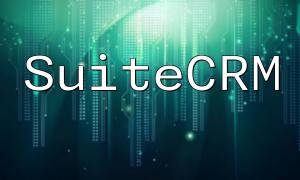In modern web applications, messaging systems are a critical component. Such systems allow different applications to send and receive messages, enabling data exchange and collaboration. PHP and SOAP are two commonly used technologies that are well-suited for building efficient messaging systems.
This article will introduce how to build a scalable messaging system using PHP and SOAP. We will start with the basic knowledge and gradually work through examples to show how to implement the system. By the end of this article, you'll have a clear understanding of how to create a scalable messaging system with PHP and SOAP.
SOAP (Simple Object Access Protocol) is an XML-based protocol used for exchanging messages over a network. It uses the HTTP protocol for data transmission and encapsulates and encodes messages in XML format, enabling interoperability across different platforms and programming languages.
In PHP, SOAP functionality is provided by the built-in SOAP extension. This extension includes several classes and functions, making it easy to create SOAP clients and servers and send and receive messages.
First, we need to create a SOAP client that sends SOAP messages to other applications. Below is a simple PHP code example:
<?php
// Create a SOAP client
$client = new SoapClient("http://example.com/soap-server");
// Create a SOAP message
$message = array("name" => "John Doe", "age" => 30);
// Send the SOAP message
$result = $client->__soapCall("sendMessage", $message);
// Handle the result
if ($result) {
echo "Message sent successfully.";
} else {
echo "Failed to send message.";
}
?>
In this example, we create a SOAP client using the SoapClient class, specifying the target SOAP service URL as "http://example.com/soap-server". Next, we create an array $message to hold the message data and use the client’s __soapCall() function to send a SOAP message named "sendMessage". Finally, we handle the returned result.
It's important to note that, in actual usage, you would adjust the message format and content according to the target SOAP server's interface specifications.
In addition to creating a SOAP client, we also need to create a SOAP server that can receive SOAP messages from other applications. Below is a simple SOAP server code example:
<?php
// Create a SOAP server
$server = new SoapServer("soap.wsdl");
// Define a function to handle SOAP messages
function sendMessage($message) {
// Process the received SOAP message
// ...
// Return the result
return true;
}
// Register the function with the server
$server->addFunction("sendMessage");
// Handle SOAP requests
$server->handle();
?>
In this example, we create a SOAP server using the SoapServer class and specify a WSDL file ("soap.wsdl"). We then define a function named sendMessage to handle incoming SOAP messages. Within this function, we can process the message as needed and return the result. Afterward, we register the function with the server using addFunction() and handle the SOAP requests using the handle() method.
With the basic code examples provided above, we have learned how to build a simple SOAP messaging system. However, in real-world applications, we often need to implement more complex functionalities or meet additional requirements. Scalability is, therefore, an important consideration when building a robust system.
To achieve scalability, you can extend the classes and functions of the SOAP client and server to support more message types and data formats, enable data encryption and compression, or implement asynchronous messaging and callback mechanisms.
Additionally, integrating other technologies and tools can enhance the system's capabilities. For example, you can use a database to store and manage message data, leverage message queues to handle large volumes of messages, or implement authentication and authorization mechanisms to ensure security and compliance.
In this article, we have learned how to build a scalable messaging system using PHP and SOAP. We covered the basics of SOAP and demonstrated how to create SOAP clients and servers to send and receive messages. Finally, we discussed some ideas and recommendations for expanding the functionality and ensuring scalability.
PHP and SOAP are just one way to build a messaging system. Depending on your specific needs and technical stack, you can choose other technologies and tools to develop your system.
We hope this article helps readers understand how to build scalable messaging systems with PHP and SOAP and that it encourages further learning and skill development in related areas.









